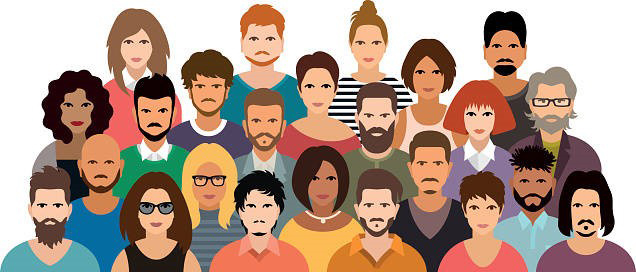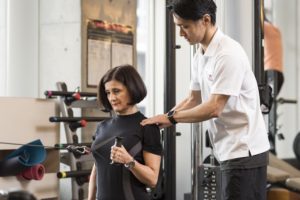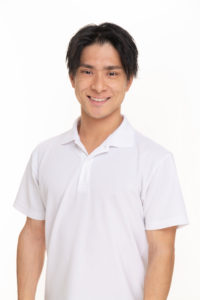By Takeshi Hirata
Our world has become more globalized, driven by technological advancement and changes in the economic landscape. There is a growing need to develop a set of skills that help you to successfully craft culturally-sensitive fitness services for the people who don’t act/think/look like you.
Over the last 10 years, having worked with people from more than 18 different countries, I would like to share my personal insights on this topic that will hopefully benefit you and your business when dealing with diverse clients.
Why It Matters
The business climate is changing.
- Personal trainers or gym facilities offer same level of training services and are competing in a “lack of variety.”
- Thanks to the internet, our clients are now able to search, compare, and choose the best option available for them.
- Customer needs are becoming more diverse and heterogeneous. The “one size fits all” approach doesn’t work.
What to Do
If you can address specific needs or desires of culturally diverse clients and successfully deliver an exceptional customer experience to them you can set yourself apart from others and your business will grow rapidly.
1. Personal Characteristics
These are core personality traits that enable a constructive client-coach relationship with people who have different cultures and lifestyles. Here are some examples:
- Open Minded: mental capacity to accept other people and their point of view.
- Kind: being a good person.
- Proactive: anticipate changes.
- Empathetic: ability to put oneself in someone else’s shoes.
2. Global Skills/Knowledge
- Develop good coaching skills first; this will increase your bottom line. Check your coaching rank to assess your level: http://www.precisionnutrition.com/nutrition-coaching-skills-quiz
- Learn from people, services, or products that are accepted across cultures like Nike, Disney, Apple, and Amazon.
- Work to be an educated human being; this helps you to think outside the box and synthesize new ideas and solutions.
- Acquire and maintain general knowledge in humanities including social science, history, philosophy, art, religion, literature, and politics.
- Acquire and maintain general knowledge in biology, anatomy, biomechanics (physics), and psychology.
- PTA Global’s Behavior Change in Exercise Credential and Mindset Performance Credential (coming soon) can help to lay good ground work for the above skills.
3. English Proficiency (especially accent)
If your mother tongue is not English, improving your English will create a substantial advantage to your business if you work with people from different countries. Speaking fluent English with a good accent will make you look like a better fitness professional whom your customers can trust. For example, if you are working with American clients, using an American accent can not only help you to be understood but is one way to show empathy. For more about on this, check American Accent Training.
Coaching in Action
STEP 1: Take time to learn the values, communication styles, customs, priorities, concerns, and unique needs of the customer demographics.
Go inside the heads of others and get their perspective. Knowing subtle nuances of what your customers want and need will make you a person who “gets it.”
Consider factors like:
- Cultural differences: individualism versus collectivism.
- Communication style: direct versus indirect, assertive versus polite, formal versus casual, emotional versus rational, neutral versus affective.
- Values: What’s good or bad, what’s desirable or undesirable, what’s acceptable or not acceptable, what’s masculine or feminine.
Observe and see if you can identify these in in your clients’ behaviors.
STEP 2: Build and maintain trust.
Assisting someone who is unlike yourself may feel intimidating and uncomfortable. If trust is weak, the relationship will fail; engage in trust building activities like the examples below.
- Self-disclosure. Share information about yourself.
- Sharing a common thread.
- Spending time with your client outside gym i.e. dinners or having a cup of coffee.
Building trust takes time and effort.
Collect data about the client. Assess. Stay non-judgmental and observe carefully. Pay attention to his or her mannerisms, body language, expressions, and emotions.
STEP 4: Based on the data, create a detailed customer profile/owner’s manual.
This is an outline of who they are including personality types, their needs, their strengths, weaknesses, issues, personal tastes etc. Use these reference materials for personalizing the program you deliver.
Don’t Assume Anything!
We are all biased based on our life experiences to some degree and it is OK to be biased… if we stay aware of it.
Do:
- Ask for clarification and listen when you are not sure.
- Work hard to break out of your comfort zone.
- Accept making mistakes.
- Use humor, with caution.
- Change your communication styles to match theirs. As Japanese, I am pretty polite by default, which works fine when dealing with Japanese customers, but when working with Americans for example, I tweak the knob and be more assertive.
Don’t:
- Use gender/race/ethnic stereotypes and generalize people.
- Assume that all Asians know martial arts. Fact: the majority don’t.
- Be superficial.
- Say things like “Oh, I listen to Jay Z and Beyoncé” when talking to African American clients.
- Don’t play favorites with customers or staff; your professional image will suffer.
Conclusion

Developing successful inter-cultural coaching practices takes time, effort and patience. But these efforts are hard to replicate and valuable, allowing you can differentiate yourself from competition.
Left: Me in Rio De Janeiro. Traveling is a great way to raise a cultural awareness.
Based in Tokyo Japan, Takeshi has worked with professional and college level athletes, fashion models, actors, dancers and general population from more than 15 different countries around the world.
BS in kinesiology. CSCS by NSCA, Precision Nutrition Level 2, Functional Range Conditioning Specialist. Background with dancing and performance art. Works at Tokyo American Club. https://www.tokyoamericanclub.org/index.php/en/fitness
STEP 3: Capture data and stay attuned to nuances.




